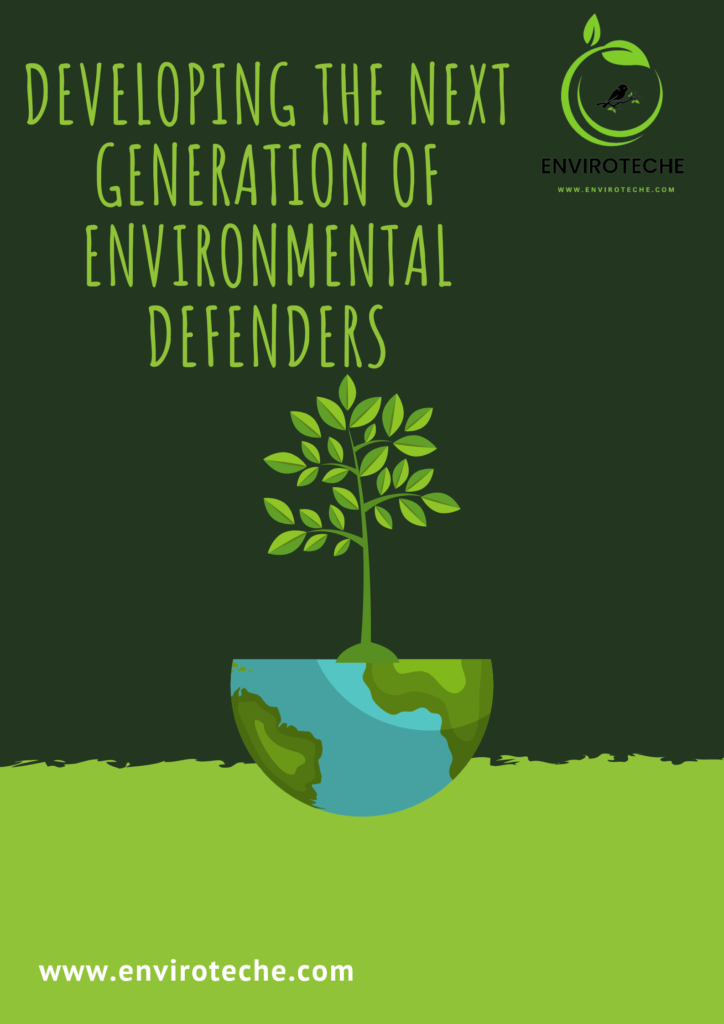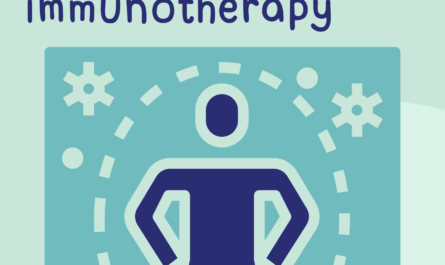
Developing the Next Generation of Environmental Defenders
Musharraf Hussain1, Muhammad Shahbaz1
1Department of Environmental Sciences, Government College University Faisalabad
The fight against climate change and environmental degradation has seen a rise in recent years among young people all over the world. The youth have become a powerful force in environmental conservation, participating in everything from fervent strikes and protests to creative solutions and grassroots initiatives. In this blog post, we will examine the critical part that young people play in creating a sustainable future and talk about how their deeds can ignite global change.
For the sake of our planet’s future, it is essential to empower the next generation of eco-warriors. In light of the urgent environmental issues we face, it is crucial to give young people the information, tools, and resources they require to be powerful change-makers. The next generation’s empowerment is largely dependent on education. We can instill a profound understanding of how interdependent humans and nature are on one another in students by incorporating environmental education into school curricula (Kumar & Singh, 2018).
Critical thinking, problem-solving, and a sense of environmental responsibility are all fostered by environmental education. It gives young people the resources they need to act and make informed decisions. Young people can be empowered through practical involvement and first-hand experiences. We give them the opportunity to see the real results of their actions by involving them in environmental campaigns, conservation initiatives, and community projects. We build youth confidence and equip them to take responsibility for environmental issues by involving them in decision-making processes and providing them with leadership opportunities. Young eco-warriors need mentorship and access to resources (Amorim-Maia et al., 2022).
By giving them chances to interact with seasoned environmentalists, scientists, and activists, knowledge can be shared and advice can be obtained. It aids in their skill development, network growth, and learning from practical experiences. It is also possible to help young people turn their ideas into worthwhile projects by supporting their initiatives and providing funding sources. Furthermore, it’s crucial to promote a culture that respects and values the opinions of young people. By providing forums for young people to voice their opinions, issues, and solutions, we can encourage their active involvement in environmental decision-making. We encourage a sense of empowerment and agency in them by valuing their perspectives, which motivates them to make a difference (PEOPLE & PICKARD, 2020).
Activators of Change
The youth have repeatedly shown that they are change agents. They have succeeded in spreading awareness of urgent environmental issues like climate change, deforestation, and plastic pollution through their activism (Bandura & Cherry, 2020). Young activists have been successful in elevating environmental issues to the top of the public conversation by planning protests, participating in social media campaigns, and pressuring decision-makers to take action. Young activists have succeeded in raising awareness of environmental issues among the general public.
Their protests, strikes, and social media campaigns have successfully spread awareness of pressing issues like plastic pollution, deforestation, and climate change. They forced governments, businesses, and communities to face the urgent need for change by refusing to be silent. Global collaboration is made possible by the interconnectedness of today’s youth, which is made possible by social media and online networks (Monteiro & Capelari, 2021).
Young environmentalists collaborate with like-minded individuals around the world, exchanging concepts, tools, and tactics. Through their cooperation, they can raise their voices and forge a unified front in the struggle against environmental problems. Together, they are creating a truly global movement that cuts across national boundaries (Steiner et al., 2020).
Innovation and New Viewpoints
The capacity of young people to think creatively and approach issues from novel angles is one of their special strengths. They aren’t afraid to question the status quo and accepted practices. This way of thinking has produced ground-breaking technologies and solutions for reducing environmental harm. Young businesspeople and inventors are bringing about change by coming up with innovative ways to protect the environment, whether it’s by developing sustainable alternatives to single-use plastics or developing renewable energy systems (Monteiro & Capelari, 2021).
Knowledge and Awareness
It is important to recognize the importance of education in raising environmentally conscious people. In schools and universities, youth-led organizations and environmental clubs are crucial in educating their peers about sustainable practices. Young environmentalists are empowering their communities to adopt eco-friendly practices and make informed decisions by planning workshops, campaigns, and awareness drives (Hilder & Collin, 2022).
In order to promote a culture of sustainability and ensure long-term environmental stewardship, education and awareness are crucial tools. Young people are advocating for change and influencing policy decisions in addition to grassroots activism. They bring youth viewpoints and demands into the political sphere through lobbying, interaction with decision-makers, and participation in international climate conferences. They are enacting systemic change and influencing the laws that will determine the future of our planet by holding governments accountable and advocating for stricter environmental regulations (Organization, 2021).
Advocacy and Policy Influence
Youth involvement in environmental conservation goes beyond grassroots activism. Advocacy and Policy Influence. At the local, state, and federal levels, as well as internationally, many young leaders have had a positive impact on policy decisions. They have succeeded in bringing the perspectives and demands of young people into the political sphere through lobbying, interaction with decision-makers, and participation in international climate conferences. They are promoting systemic change by holding governments accountable and arguing for stricter environmental regulations.
Youth advocacy for environmental conservation and their influence on policy are crucial and transformative (Steiner et al., 2020). At all levels, from local to global, young people have demonstrated their capacity to influence policy. They bring youth viewpoints and demands into the political sphere by lobbying, conversing with decision-makers, and taking part in climate conferences. They promote systemic change by holding governments accountable and arguing for stricter environmental regulations. Their fervor and perseverance have changed the conversation surrounding sustainability, motivating people of all ages to take action. A greener and more sustainable future is being built for future generations thanks to the youth’s advocacy and policy influence (Bandura & Cherry, 2020).
Collaboration and Global Networks
Youth-led environmental initiatives frequently cross national boundaries and promote global cooperation. Young people connect with like-minded activists around the world through social media platforms and online networks, exchanging ideas, materials, and tactics. They can raise their voices and unite in the face of environmental problems thanks to their interconnectedness (Organization, 2018). In order to address environmental issues, cooperation and global networks are essential.
Collaboration is made simple by bringing together young environmentalists and activists from different countries, social media platforms, and online networks. These networks allow for the sharing of concepts, plans, and materials, allowing for a coordinated strategy to tackle the world’s environmental problems (Calma et al., 2022). Young people can strengthen their voices, exchange best practices, and find inspiration from one another through collaboration. They can forge a potent force for change by cooperating across cultural, geographic, and political divides, advancing international initiatives, and promoting a sustainable future for all (Trott et al., 2020).
Conclusion
Young people play a crucial and transformative role in environmental conservation. Their enthusiasm, creativity, and tenacity are changing the conversation about sustainability and motivating people of all ages to take action. Young people are creating a greener and more sustainable future by fostering collaboration, fostering innovation, advocating for change, and raising awareness. Let’s recognize and support young people’s efforts to safeguard and preserve our planet for future generations as we observe World Environment Day.
Reference
Amorim-Maia, A. T., Anguelovski, I., Chu, E., & Connolly, J. (2022). Intersectional climate justice: A conceptual pathway for bridging adaptation planning, transformative action, and social equity. Urban Climate, 41, 101053.
Bandura, A., & Cherry, L. (2020). Enlisting the power of youth for climate change. American Psychologist, 75(7), 945.
Calma, K. R. B., Brown, L. J., Fernando, G. V. M. C., & Omam, L.-A. (2022). Strengthening primary health care: contributions of young professional-led communities of practice. Primary Health Care Research & Development, 23, e13.
Hilder, C., & Collin, P. (2022). The role of youth-led activist organisations for contemporary climate activism: the case of the Australian Youth Climate Coalition. Journal of Youth Studies, 25(6), 793–811.
Kumar, B., & Singh, A. K. (2018). Development of Environmentally Sustainable and Inclusive Architecture. Architecture, 2, 3.
Monteiro, L., & Capelari, M. G. M. (2021). Contextualizing Youth Climate Activism in Brazil: Knowledge, Motivations, and Policy Actions. International Conference on Public Policy (ICPP 5).
Organization, W. H. (2018). Engaging young people for health and sustainable development: Strategic opportunities for the World Health Organization and partners.
Organization, W. H. (2021). Young people’s fight against climate change: actions we can take for health and well-being.
PEOPLE, A. A. Y., & PICKARD, S. (2020). CHAPTER FOUR THE NATURE OF ENVIRONMENTAL ACTIVISM AMONG YOUNG PEOPLE IN BRITAIN IN THE EARLY 21ST CENTURY SARAH PICKARD1. Political Ecology and Environmentalism in Britain, 89.
Steiner, A., Aguilar, G., Bomba, K., Bonilla, J. P., Campbell, A., Echeverría, R. G., Gandhi, R., Hedegaard, C., Holdorf, D., & Ishii, N. (2020). Actions to transform food systems under climate change.
Trott, C. D., Even, T. L., & Frame, S. M. (2020). Merging the arts and sciences for collaborative sustainability action: A methodological framework. Sustainability Science, 15(4), 1067–1085.
Check Other Schlorships:
